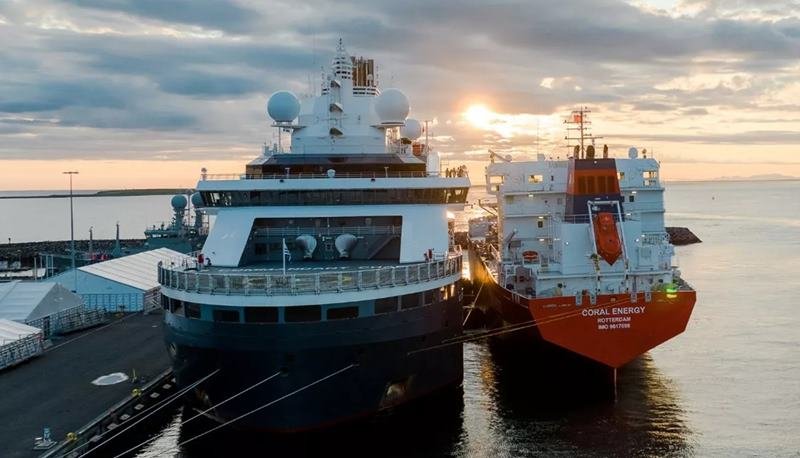Gasum Achieves Historic First Bunker Operation in Iceland, Supplying LNG and LBG to Ponant’s Le Commandant Charcot
Gasum extended its liquefied natural gas (LNG) bunkering network by providing marine LNG to its trusted customer PONANT in the port of Reykjavik, Iceland. During this first LNG bunker operation ever performed in Iceland, Gasum’s LNG Bunker vessel Coral Energy delivered LNG and liqefied biogas (LBG) to PONANT’s ice-breaking state-of-the-art cruise vessel Le Commandant Charcot.
By providing marine LNG in remote locations where such cruise vessels operate, Gasum supports the ambition of its cruise customers to continuously improve the environmental performance of their fleet and reduce the impact on visited ecosystems. In addition to the almost complete elimination of local pollutant emissions that are already achieved by using LNG, the use of LBG reduces the carbon footprint of cruising significantly.
Gasum’s biogas cuts carbon emissions on average by 90 percent when compared with traditional fossil fuels.
Gasum’s strategic goal is to bring seven terawatt hours (7 TWh) of renewable gas yearly to market by 2027. Achieving this goal would mean a yearly cumulative carbon dioxide reduction of 1.8 million tons for Gasum’s customers.
The cleanest marine fuel available
Reducing emissions in the maritime sector is crucial to mitigate the impacts of climate change and protect human health. Liquefied gas, such as liquefied natural gas (LNG), can help reduce emissions in the maritime sector because it produces fewer greenhouse gas emissions and air pollutants than traditional marine fuels. LNG is also readily available and can be used with existing engine technologies, making it a viable alternative to traditional marine fuels. Renewable Liquefied Biogas (LBG) can also be used to blend with LNG to lower emissions even more. By using LNG as a marine fuel, shipping companies can reduce their emissions and comply with international regulations, such as the IMO’s greenhouse gas reduction strategy.
LNG is a safe and proven technology that offers higher energy content and lower operational and maintenance costs. It is suitable for all vessel types, including ferries, passenger ships, tankers, bulk carriers, supply and containerships.
As a premium provider of LNG, Gasum is a trustworthy partner for both experienced buyers and for customers that are switching from conventional fuels to LNG. Our wide variety of sustainable yet efficient services and solutions support our customers in optimising their operations for a more sustainable future.
Decarbonization of the maritime industry
Maritime traffic generates 3 percent of the world’s total greenhouse gas emissions such as carbon dioxide. This contributes to global warming and extreme weather conditions. CO2 is emitted by ships using petroleum-based fuels to power main and auxiliary engines. Through the International Maritime Organization (IMO) the world’s shipping industry is constantly working to reduce CO2 emissions.
LNG as a marine fuel meets all the current and forthcoming IMO and EU regulations. Switching to LNG means complete removal of Sox and particles, and reduction of Nox emissions of up to 85 percent. LNG reduces CO2 emissions by at least 20 percent.
As a fuel, LNG is interchangeable with renewable LBG (liquefied biogas), as they both consist mainly of methane. This means that the two gases can be mixed. Using both LNG and LBG is one of the concrete actions that will take us towards a low-carbon society of the future.
Source Gasum Ltd.

